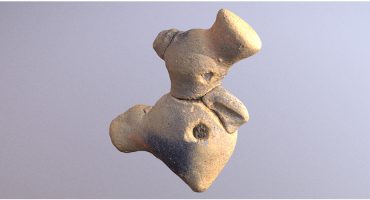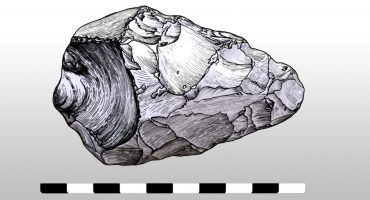Museums exist to celebrate the achievements of humanity. They collect, preserve and interpret artifacts of artistic, historical, or scientific value, and make them available for public viewing. The transmission of culture to the people is thus a museum or cultural institutions’ raison d’etre; it is a social necessity.
In order to make cultural heritage accessible to everyone, many museums and cultural institutions are free, receive grants from governments or donations from private donors. In museums’ quest to spread knowledge, they have made replicas of collections (either in plaster, using photography, or more recently via 3D capture) for educational and preservational purposes. Today, these 3D assets can now be leveraged in many other ways.
As 3D capture has become more widely available, we made it easy for museums to use Sketchfab to share their collections. As a result, over 200 cultural institutions have joined Sketchfab over the past few months. They’ve collectively uploaded more than 3,500 models, resulting in more than half a million visits (that we know of)! These numbers are growing fast every day, underscoring the will of cultural institutions to leverage 3D as part of their digital strategy. We continue to support the important work of museums by sponsoring museum accounts with free business licenses.
Why Sketchfab for Museums?
“A picture is worth a thousand words.”
The English idiom has it that “an image of a subject conveys its meaning or essence more effectively than a description does”. But if a picture is worth a thousand words, what about an interactive 3D capture?
An interactive 3D capture is a virtual representation of a physical object that you can see from every angle on your computer or smartphone. It means that you can manipulate a 3D object, which helps in learning and understanding. On Sketchfab, it is even possible to display animated 3D captures and to add annotations to highlight specific details, making the experience even more interactive. The British Museum understood this advantage very well as it was the first leading museum to use Sketchfab. It now shares animated and annotated 3D captures of its collections weekly, such as this first animated 3D capture of the statue of A’a, one of the Pacific’s most famous sculptures:
Social sharing makes it even more powerful; the statue was also shared on the British Museum page on Facebook:
//
Discover the #Pacificgod A’a from all angles! Learn more about this enigmatic sculpture on Sketchfab http://ow.ly/ZByaeSee A’a on display in Room 3 http://ow.ly/ZiVHo
Posted by British Museum on Thursday, March 17, 2016
If a picture is worth a thousand words, an interactive 3D capture must be worth a thousand pictures.
Sharing 3D captures during the earthquake in Taiwan
Architecture is an important expression of cultural identity. As such, part of museums and cultural institutions’ role is to document both architectural marvels and changes over time to keep track of them in collective memory.
The National Chang Kung University Museum used drones to 3D capture the aftermath of the Taiwan Earthquake almost in real-time, a story that was covered in Mashable. Using drones to assess the damages to buildings is very powerful and helps raise worldwide awareness, as well as understanding the needs in a specific damaged area. This process was already used for the earthquake in Kathmandu and shows that the technology is now good enough for anyone to create, publish and easily share 3D content anywhere online.
Engaging new audiences through social media
Last September, the Van Gogh Museum shared an artistic 3D reproduction of Van Gogh’s room on Facebook, resulting in an incredible 16k likes and 8.3k shares. This shows the power of innovative content and the ability of 3D interactive content to engage audiences. What’s even more exciting is that you can now have an immersive experience of Van Gogh’s room thanks to the Virtual Reality button in the viewer, just using a smartphone and a VR device such as the Google Cardboard.
//
Curious what Vincent’s Bedroom would look like in 3D? Sketchfab artist ruslans3d has created this interactive impression: https://sketchfab.com/models/311d052a9f034ba8bce55a1a8296b6f9
Posted by Van Gogh Museum on Sunday, September 13, 2015
Virtual reality (VR), augmented reality (AR) and the future of museums
While they preserve the past, museums are also searching for new ways to engage with the future, leveraging technology to make culture accessible and to reach new (and younger) audiences. We’re thrilled to see 3D content has now found a place in the strategy of these institutions, alongside photos, videos, and interactive audio tours. However, the physical variable has always been a barrier to scale these efforts. Until now, it wasn’t possible for a Brazilian citizen to discover the British Museum’s artifacts without being present on site. Time has also been an important barrier as the distressing example of the (destroyed) antique city of Palmyra in Syria, reminds us every day.
While virtual experiences can never fully replace on-site experiences, they do allow an immersive approximation. Today it is possible to visit the Academy of Athens in Greece from China, fostering cross-cultural interest and understanding of our shared cultural heritage.
For a curator, VR also presents the elusive ideal: the ability to display each artifact in a perfect contextual environment, with perfect lighting. Imagine, as a visitor, if you could be alone with The Thinker, admiring him in the setting Rodin intended: his Parisian garden. Virtual Reality can take you there.
The question is not whether this will or will not happen, but how fast will museums will adapt and evolve. As the guardians of culture, they have a huge role to play in this journey. VR experiences have the power to help museums develop new audiences and engage them in ways not previously possible. It is therefore crucial for museums to start creating 3D and VR content to build accessible experiences as a complement to on-site experiences. We’re proud to enable that at Sketchfab.
Join the flock!
In our effort to support culture, we offer free business licenses to museums and cultural institutions. The process is very simple: just create an account on Sketchfab and contact us at museums@sketchfab.com to request your free upgrade.
We have also started looking at ways to involve our community more to participate in cultural heritage and 3D digitization. We are glad to work with crowdsourced projects like Rekrei (formerly Project Mosul) and the Zamani Project. More and more members of our community are also helping to 3D scan and digitize Museums’ artifacts, like Thomas Flynn who is deeply involved with the 3D content production of the British Museum.
As long as museums continue to preserve and educate us about our past, Sketchfab will continue to support them. Explore all the cultural institutions on Sketchfab and let us know if there is more we could do! What role do you think museums play in our future?


